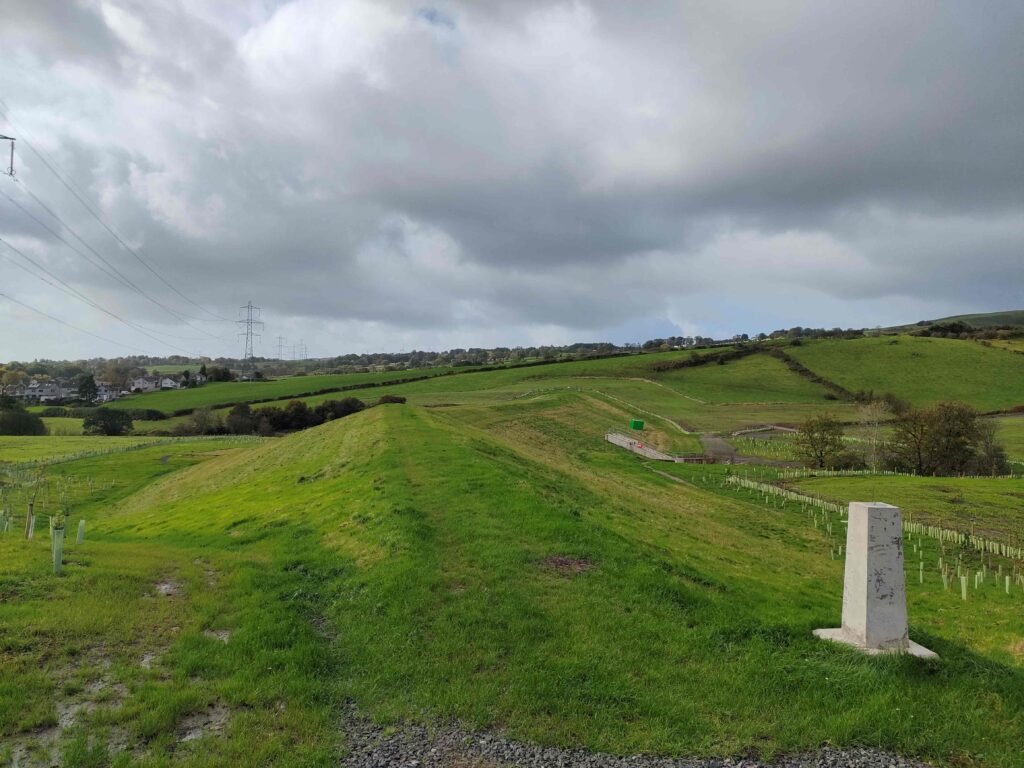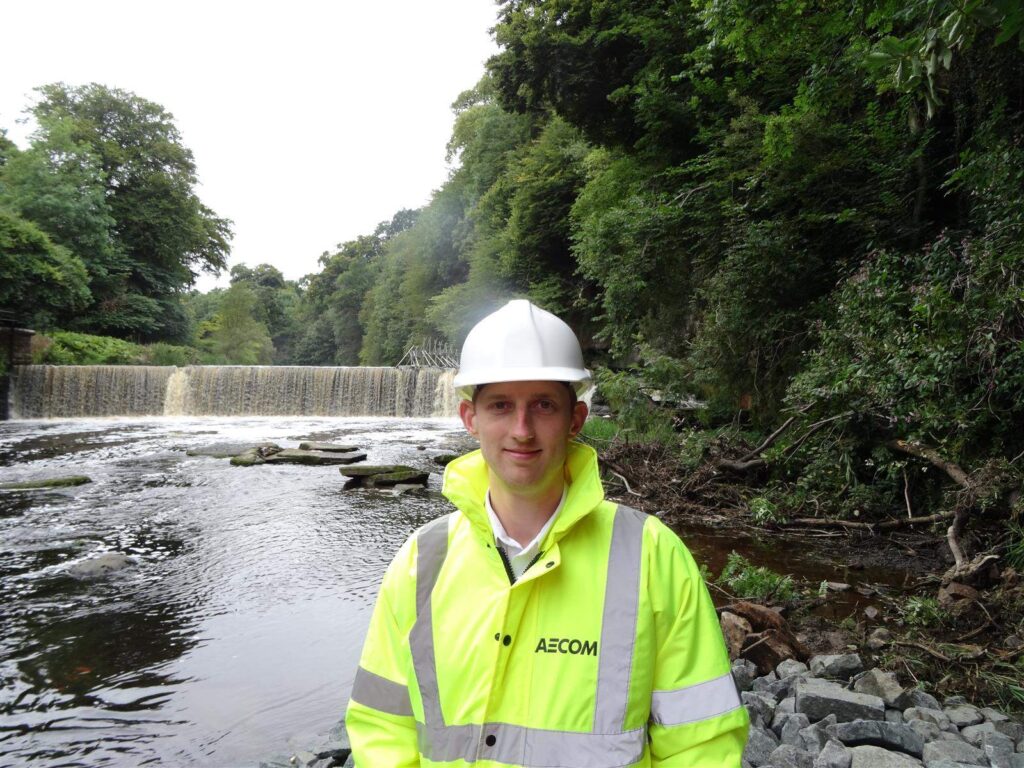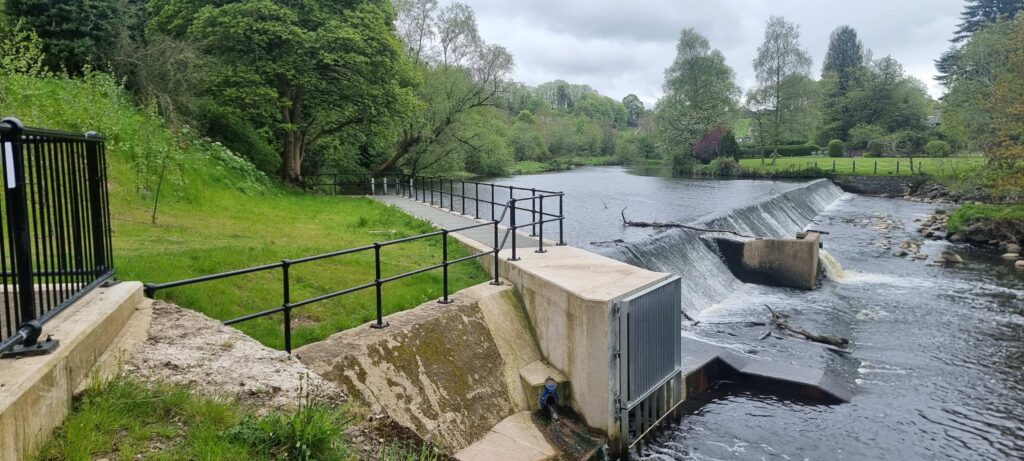People Spotlight: Meet Mark Biesta
Our People Spotlight series gives you an inside look at our technical experts around the world. This week, we are highlighting a principal engineer from the United Kingdom and providing an insight into their inspiration and work.
Mark Biesta specializes in river restoration, dams and reservoirs, nature-based solutions and flood protection. He enjoys finding creative ways to balance the needs of complex multi-disciplinary projects with technical challenges, and numerous environmental and social considerations. By leading efforts to reduce the carbon impacts of his projects, he is helping our clients achieve their sustainability goals.
What inspired you to join the industry?
As a kid, I always liked the idea of being an ‘inventor’ – inspired by reading Disney’s Willie Wortel (Gyro Gearloose in the English version) comics. However, as a teenager I thought I’d become a pilot. I remember finding a massive book in the library with a big list of occupations that led me from pilot to aeronautical engineer to civil engineer. That sounded an awful lot like the inventor I always wanted to be! It turned out to be the perfect match for me, applying my analytical skills to solving real problems and making the world a better place. Thanks, Willie!
I remember finding a massive book in the library with a big list of occupations that led me from pilot to aeronautical engineer to civil engineer. That sounded an awful lot like the inventor I always wanted to be!”
What is your favourite AECOM project that you’ve worked on and why?
In 2015, we were selected to design a series of fish passes on the River Almond in central Scotland. Over the nine years that followed, we worked with West Lothian Council and the City of Edinburgh Council to build six fish passes. Each one had its challenges. For example, making sure the fish would find the fish pass entrance required combining my hydraulic engineering expertise with our aquatic ecologists’ understanding of fish behaviour to maximise fish attraction. Given their industrial history of the site, many of the weirs were also covered by heritage designations. Through sensitive design and understanding of the heritage value, we were able to improve fish passage whilst maintaining important pieces of the River Almond history. Overcoming the challenges was what made the project satisfying to work on, and it is even more rewarding to witness the fish passes delivering fantastic benefits to fish habitats and the surrounding natural environment.
I’m currently the technical lead for the seventh and final fish pass on the river, at Dowies Mill Weir in Edinburgh. This promises to be one of the biggest rock ramp fish passes in the UK and we are using it as a case study to see how far we can push decarbonisation on a project like this. I’ve learnt so much from these projects and have loved working with a great team of engineers, water scientists, ecologists, landscape architects, structural engineers and geotechnical engineers.
I also hope that some members of the public that see these structures will be inspired to become engineers of the future!
In 2015, we were selected to design a series of fish passes on the River Almond in central Scotland. Over the nine years that followed, we worked with West Lothian Council and the City of Edinburgh Council to build six fish passes. Each one had its challenges. Overcoming the challenges was what made the project satisfying to work on, and it is even more rewarding to witness the fish passes delivering fantastic benefits to fish habitats and the surrounding natural environment.”
Tell us a story of how your work positively impacted the community.
One of the first projects I started working on when I joined AECOM in 2013 was the Upper Garnock Flood Protection Scheme in Ayrshire, Scotland. Several towns along the River Garnock and its tributaries had experienced flooding over the years and the ongoing threat was holding back investment in the area.
Climate change was expected to add to future flood risk, and the deterioration of existing old flood walls would have exacerbated this further. We worked with our client, North Ayrshire Council, to carry out a detailed options assessment and consulted with local communities to build a business case for a flood protection project.
North Ayrshire Council was successful in obtaining funding for the project and after many years of hard work, a new flood storage dam, flood walls and flood embankments have now been built. The project will protect the communities from future flooding, reduce the social impacts of flooding and support regeneration of the towns. It was great to see all the analysis, optioneering, design and reporting turn into something tangible that makes a real difference to people’s lives.

One of the first projects I started working on when I joined AECOM in 2013 was the Upper Garnock Flood Protection Scheme in Ayrshire, Scotland, where several towns experienced flooding over the years and the ongoing threat was holding back investment in the area. We worked with our client to carry out a detailed options assessment and consulted with local communities to build a business case for a flood protection project. The project will protect the communities from future flooding, reduce the social impacts of flooding and support regeneration of the towns.”
Share a piece of career advice.
Make your own luck. I feel very fortunate to have had the opportunities I have, but when I look back, I can point to key decisions that helped make these things happen. I’ve always been interested in tackling the climate crisis, and on flood protection projects, I took the initiative to study the implications of climate change and developed a process and tool to allow future climate change to be a key decision-making factor.
In 2014, I came across an opportunity to get involved with climate change volunteering. This led me to become one of the founding members of 2050 Climate Group and sit on its board of trustees. I spent six brilliant years delivering climate change and leadership training for young professionals. The experience I gained filtered back into my work, and I proactively found opportunities to address climate change issues on the projects I worked on. Recently, my experience and enthusiasm were recognised as I was asked to join the Environmental, Social and Governance (ESG) steering group for our UK & Ireland Water business. Through this leadership position, I am now working to empower AECOM’s teams to tackle the climate and biodiversity crises.









